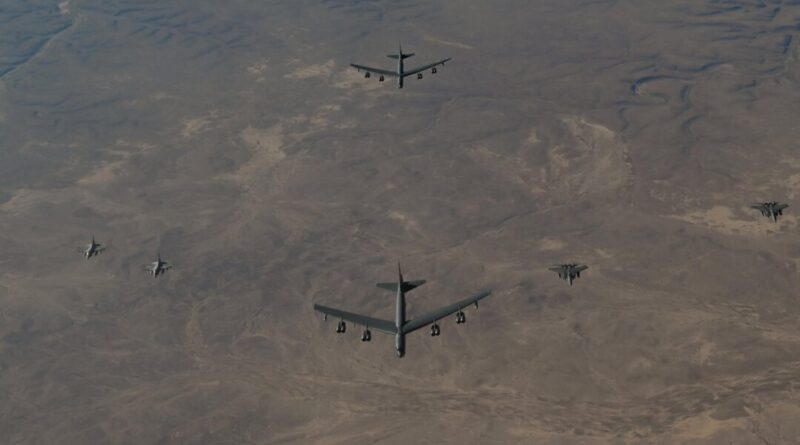B-52 Bombers Deployed Over Middle East in Strong Display Amid Heightened Regional Tensions
U.S. military officials stated that the overflight was a demonstration of America’s commitment to Middle East security and a warning to rivals against escalation.
The U.S. Air Force orchestrated a significant “force projection” overflight across the Middle East on Feb. 17 by dispatching two B-52 bombers, aiming to send a clear caution to adversaries and strengthen deterrence against increasing threats.
“Bomber Task Force missions showcase U.S. power projection capabilities, dedication to regional security, and readiness to respond to any state or non-state actor aiming to escalate conflict in the CENTCOM region,” stated Gen. Michael Erik Kurilla, CENTCOM commander.
Although CENTCOM did not disclose the countries involved in the mission, the deployment followed recent U.S.-led airstrikes against terrorist targets in Syria and Iraq, a carrier withdrawal from the region following a collision with a merchant ship, and increased Iranian military activity.
In recent days, CENTCOM and regional partners carried out two significant airstrikes targeting terrorist networks.
On Feb. 15, U.S. forces conducted a precise airstrike in northwest Syria, eliminating a top financial and logistics official for Hurras al-Din, an al-Qaeda affiliate. In Iraq, Iraqi Security Forces, supported by CENTCOM, attacked an ISIS cell near Rawa on Feb. 12, resulting in the elimination of five ISIS operatives and the destruction of weapons, suicide vests, and explosives.
The B-52 bomber operation also coincided with a temporary absence of U.S. naval presence in the region following the USS Harry S. Truman’s damage in a collision with a commercial bulk carrier near Egypt’s northern coast, leading to its departure.
This marks the third instance since the Israel–Hamas conflict started in 2023 that the United States has had no carrier presence in the Middle East, leaving the region susceptible to heightened Iranian military activities.
The B-52 flyover occurred on the same day as a significant U.S.–Russia meeting in Saudi Arabia, where officials tentatively agreed to reinstate previous diplomatic relations and set up de-escalation working groups concerning Ukraine.
The discussions, spearheaded by U.S. Secretary of State Marco Rubio, excluded Ukrainian and European officials, triggering backlash from America’s European allies.
The B-52 mission represents a reinvigoration of the deterrence and strength-projection strategies reminiscent of President Donald Trump’s first term when overflights were used to pressure Tehran following the 2018 U.S. exit from the Iran nuclear agreement.
The memorandum also calls for the neutralization of Iran’s terrorist network and the counteraction of its missile development.





